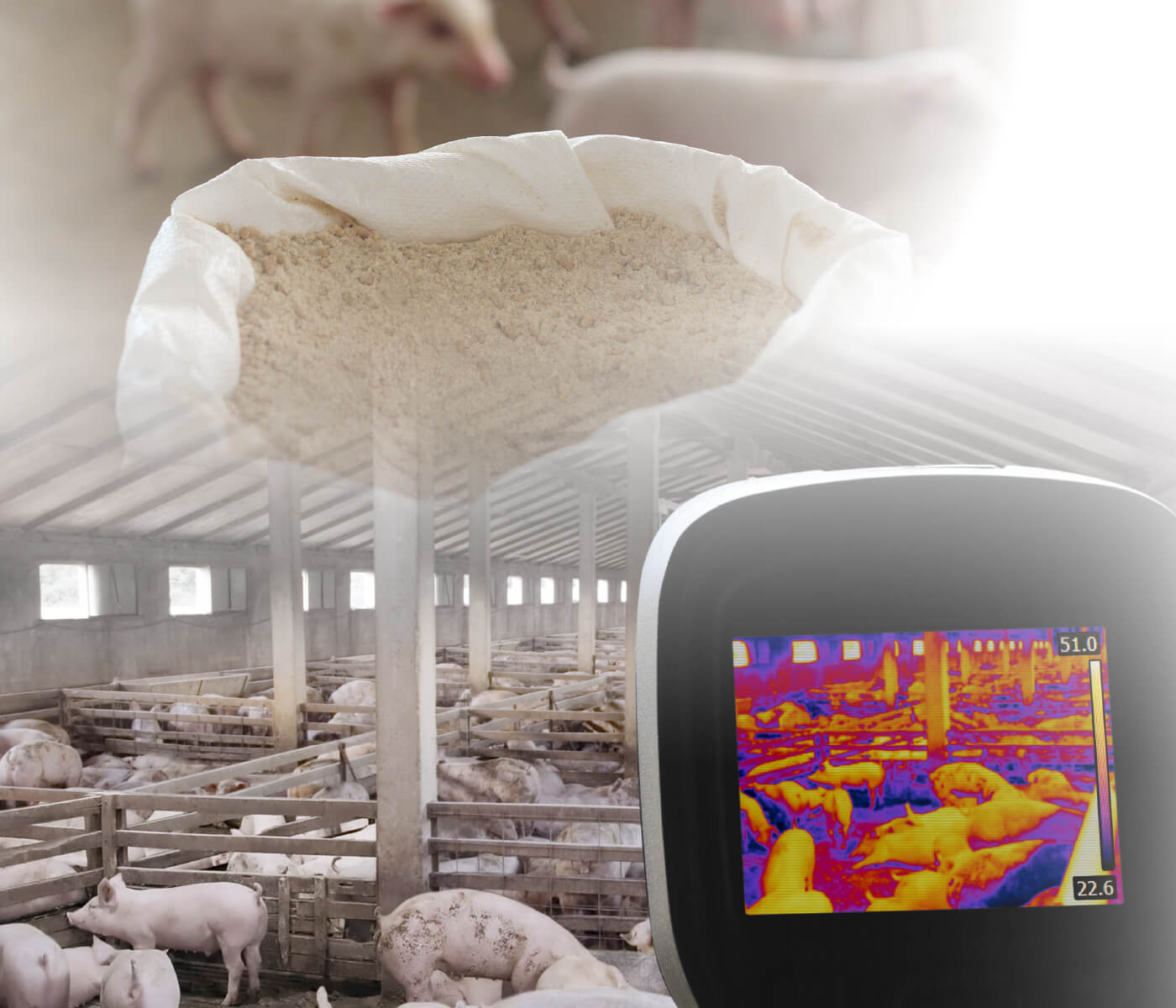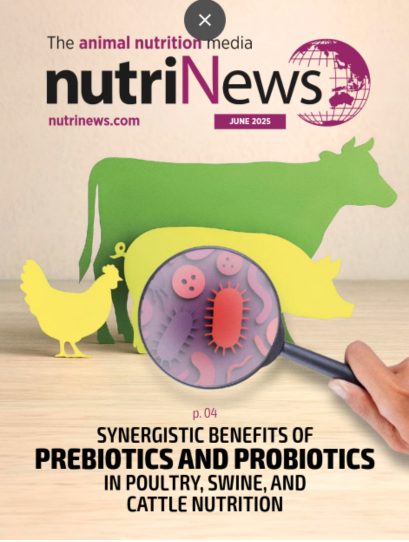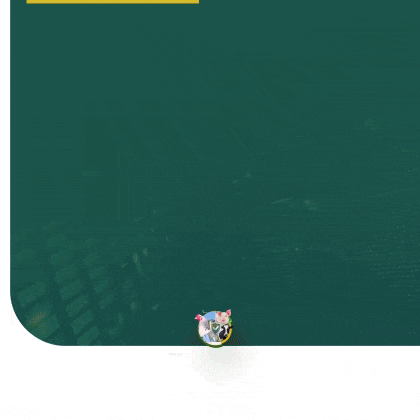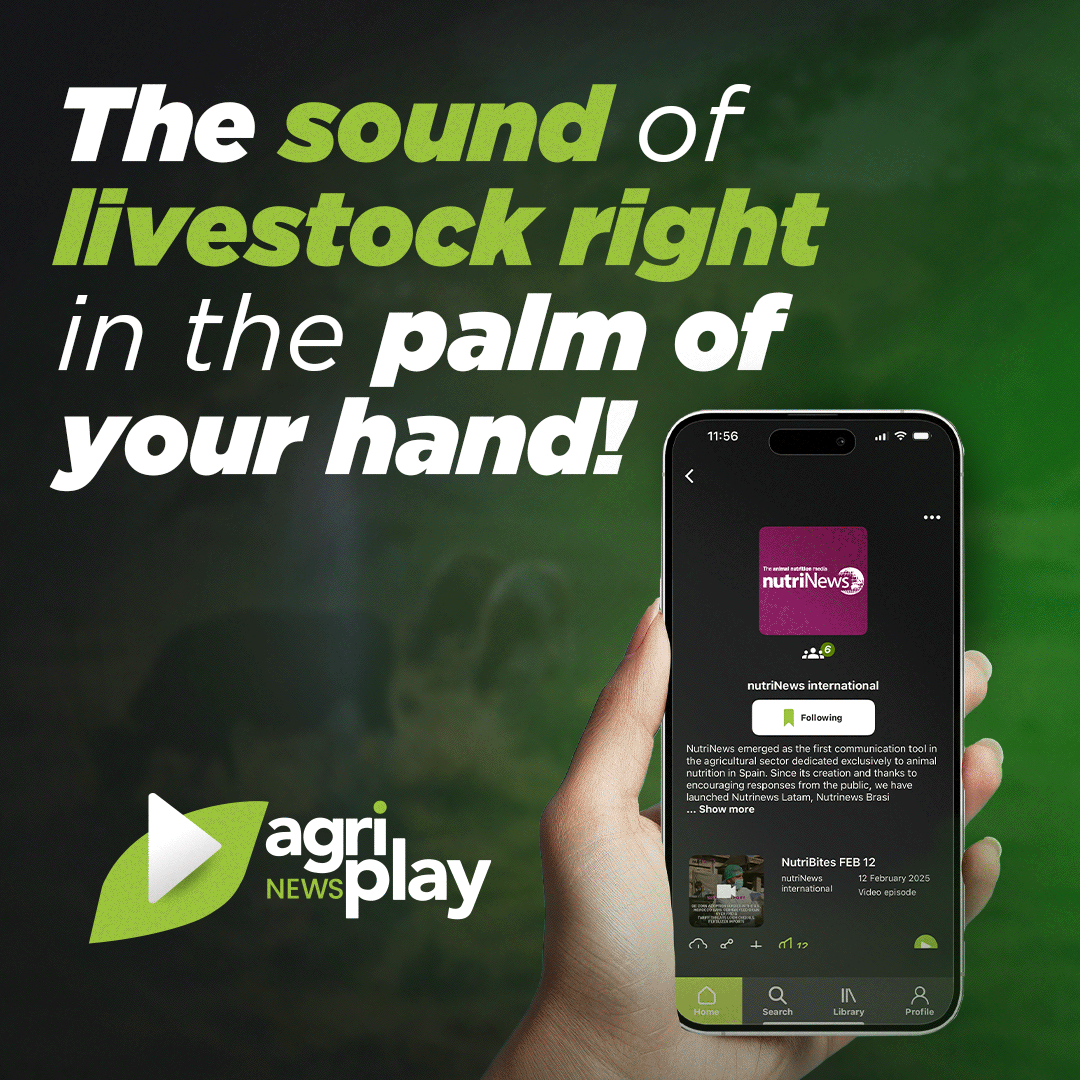Nutritional strategies to mitigate heat stress in lactating sows
Introduction
In countries with tropical climate the environmental challenges for high-production sows are constant. High productivity becomes a significant factor when it comes to the thermal comfort of lactating mothers. As it is necessary to increase feed consumption during this phase in order to avoid losses in subsequent phases (Mendoza et al., 2020).
The thermal comfort zone of lactating sows ranges from 18 to 22 ºC with a relative humidity of 40 to 70% (Silva et al., 2021).
Factors such as radiation, air current, temperature and humidity of the air must be taken into account when adjusting the temperature range for the animals’ comfort zone. This will optimize the expression of their genetic potential. Therefore, incorporating adequate heat mitigation strategies as part of the management practices and housing of high production sows in countries with tropical climates is non negotiable.
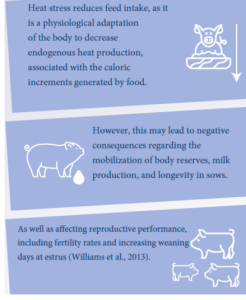
Currently, nutritional strategies such as the use of additives and adjustments in diet formulation are fundamental for favoring feed intake in sows. Reducing the deleterious effects of low consumption during lactation, which consequently improves sows’ productive and reproductive indices. The following entry addresses some of nutritional strategies that are available to help mitigate the effects of heat stress on lactating sows.
Heat stress in pigs
[register]

The sweat glands of pigs are not as efficient as those found in other animal species. Therefore, heat dissipation occurs through latent (respiratory rate) and sensitive (conduction, convection and radiation) routes.
The efficiency of these dissipation mechanisms can be influenced by other factors besides ambient temperature. These include: air humidity and velocity as well as the area of contact with housing surfaces(Bjerg et al., 2020; Brandt et al., 2022; Huang et al., 2022).
The thermal environment in which sows find themselves can modulate their feeding behavior. Thus, temperature fluctuations directly influence their feeding behavior. With greater feed intake levels occurring under milder temperatures (Quiniou et al., 2000; Silva et al., 2009, 2018 and 2021). Dietary patterns are also influenced by environmental temperature and photoperiod variations (Silva et al., 2021).

Choi et al. (2019) observed higher feed consumption in lactating sows under heat stress conditions, when they were fed at night, which corroborates the findings obtained by Silva et al., (2009 and 2021). In the latter study, researchers analyzed the performance of lactating sows during different seasons within the year. Establishing an average temperature of 26.2 vs 23.1ºC and variations of thermal amplitudes that ranged from 16.1 to 21.0ºC. They reported a higher feed intake,a better overall performance, and milk production in sows during the coldest season of the year.
High temperatures influence parameters that go beyond feed consumption. Several authors have reported variations in the reproductive performance of breeders, as well as increased mortality in piglets due to crushing. As well as lower weight gain in piglets as a result of reductions in: milk production, amino acid content and fatty acid profiles(Silva et al., 2017; Silva et al., 2018; Oh et al., 2022).
Heat stress conditions interfere with animal welfare conditions. Therefore, physiological responses are activated in an attempt to reverse this scenario.
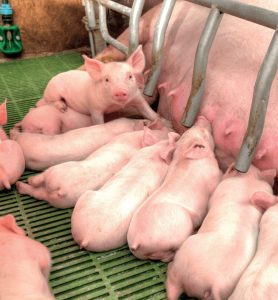
While evaluating primiparous sows subjected to heat stress, Liu et al. (2021), reported that heat stress increased the duration of calving. Affecting the number of stillbirths, due to prolonged duration of delivery, which is associated with hypoxia in piglets.
In order to control their body temperature, sows intensify the frequency with which they change position within the maternity. This leads to an increased occurrence of piglet crushing which is devastating(Wishchner et al., 2009; He et al., 2019).
Nutritional strategies that help mitigate heat stress
Current sow genetic lines have higher lean tissue deposition rates and greater reproductive capacity, which increases their endogenous heat production (He et al., 2019). Therefore, the inclusion of fibers (Oh et al., 2022), minerals (Chen et al., 2019) and additives (Rocha et al., 2022 ; Domingos et al., 2021; Silva et al., 2021) have been studied as nutritional strategies to optimize efficiency in sows.
Ensuring the intake of necessary nutrients for maintenance and production is fundamental. This is especially true, when talking about maintaining performance levels in sows that are raised in tropical environments.
Taking this into consideration, Domingos et al., (2021) evaluated the use of yeasts as a feed additive with the aim of improving: nutritional use of diets, health status and milk production in sows. Rocha et al., (2022) also carried out studies with a similar objective.

Rocha et al., (2022) evaluated the effects of dietary supplementation of yeast (Saccharomyces Cerevisiae var. Boulardii), at different times in crossbred sows. This was done in sows under tropical and humid conditions, with temperatures ranging from 25.9 to 31.9 °C. They assessed the impacts of such supplementation on: productive performance, colostrum and milk production quality.
The supplementation of 0.04 and 0.08% in sows with longer cycles, going from 90 days of gestation until weaning provided greater daily milk production and daily weight gain. Sows in their 1st and 2nd cycle, from the 90th day of gestation to the 24th day of lactation or only during lactation had higher dry matter and protein content in their milk.
Domingos et al. (2021) evaluated sows’ performance during late gestation and lactation under a humid tropical climate with yeast supplementation(Saccharomyces Cerevisiae var. Boulardii). The authors observed an increase in daily feed intake, total feed intake, and milk production in those animals supplemented with yeast, compared to those receiving other dietary treatments.
A study carried out by Mendoza et al., (2020), aimed to evaluate the dietary inclusion of Betaine. This amino acid is a methyl and osmolyte donor,that contributes to reducing the animal’s energy requirements for maintaining adequate cellular hydration and ionic balance (Andrade et al., 2016).
The authors included dietary betaine in feed during lactation as a strategy to mitigate heat in sows under heat stress conditions.

However, no beneficial effects were observed during the summer period. On the other hand, betaine supplementation during the lactation period in summer, for sows with 4+ calving, increased the size of subsequent milkings.
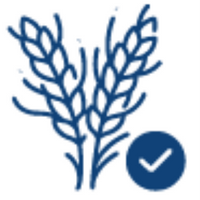 Fiber inclusion in the diet is a common practice to stimulate feed intake. However, a greater inclusion of fiber, can also change the nutritional profile of diets. As its inclusion is associated with improved intestinal integrity and a change in colostrum profiles. Due to the fact that the produced colostrum contains a higher fat content.
Fiber inclusion in the diet is a common practice to stimulate feed intake. However, a greater inclusion of fiber, can also change the nutritional profile of diets. As its inclusion is associated with improved intestinal integrity and a change in colostrum profiles. Due to the fact that the produced colostrum contains a higher fat content.
However, Silva, (2010), states that high inclusion of fiber should be studied in greater depth. Due to the fact that higher levels of fiber can increase the visceral mass of animals, which in turn increases metabolic heat production.
Oh et al., (2022), evaluated fiber inclusion in sow diets and its effect on heat stress. Their results showed that that 6.5% of total ADF inclusion during the gestation period was reflected in the lactation period. Improving feed intake, reproductive performance and milk production.
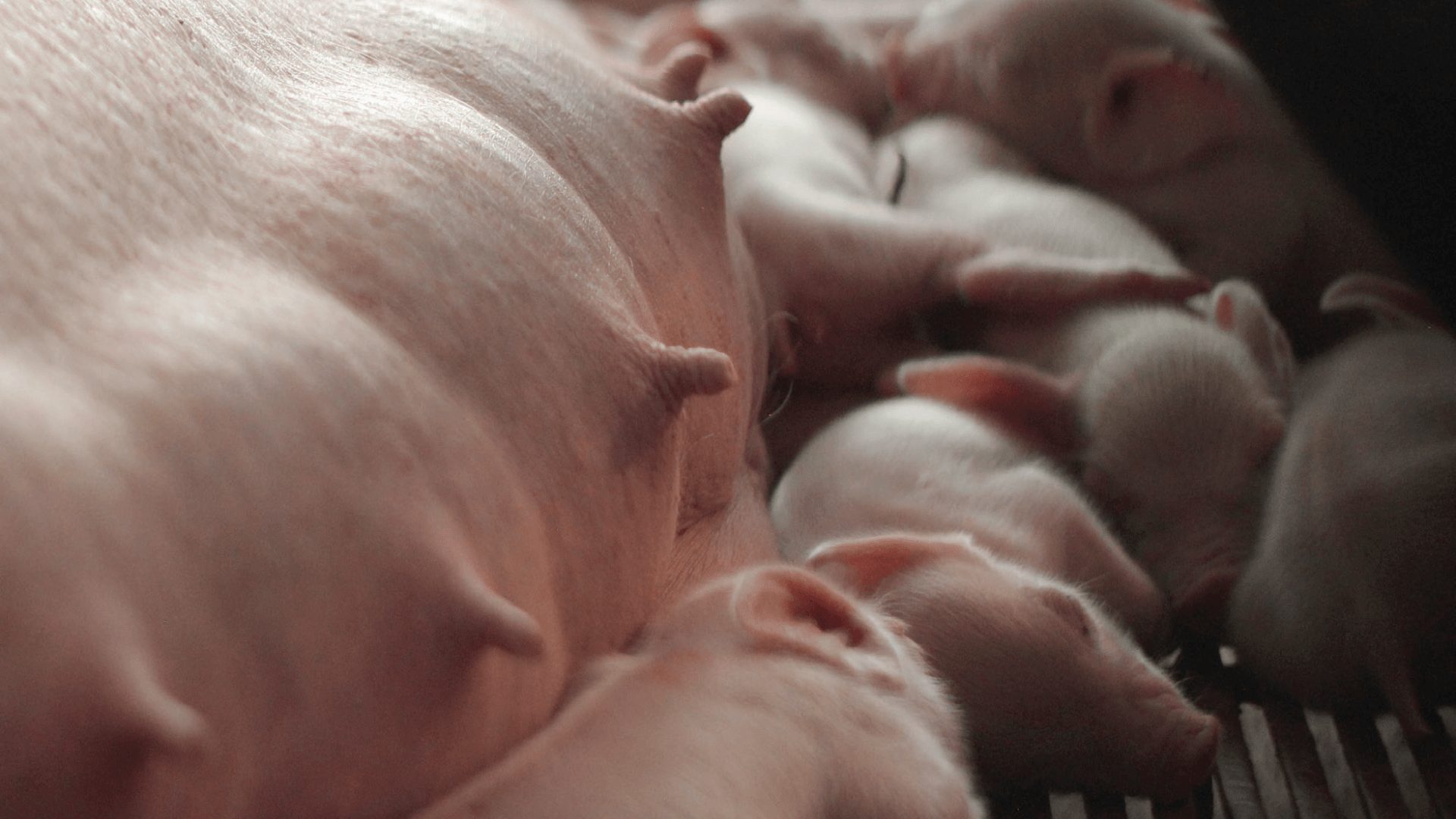
The inclusion of selenium (Se), which plays a role in redox metabolism, was the subject of a study carried out by Chen et al., (2019). The researchers assessed the impacts of increasing the dietary supply of Se in sows subjected to heat stress without the use of cooling systems. The authors of this study reported improvement in: the pre-weaning survival of piglets, colostrum and milk composition, as well as in the antioxidant status of sows and the transfer of immunoglobulins to their offspring. These beneficial effects were observed regardless of the climatic conditions in which the trial was carried out.
Silva et al., (2021), set out to evaluate if improving the sensory properties of the diet and enhancing its palatability could increase the voluntary feed intake of sows under heat stress conditions. The authors previously observed that the average daily feed intake of sows was lower during the hot season, when compared to the cold season (5.56 vs. 6.80 kg/d).
A higher average daily feed intake was observed in animals that were fed a diet containing palatable feed, compared to those which were fed the control diet (6.42 vs. 5.36 kg/d). It was also seen that certain feeding behavior patterns associated with the hot season became altered.
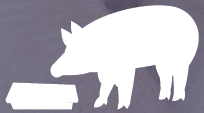 Increasing the nutritional density of feed as well as making adjustments in protein content can also provide beneficial effects when it comes to managing heat stress. As well as the type of diet which is provided. Kim et al. (2015),observed a higher voluntary feed intake in sows fed liquid diets compared to those fed dry diets. It is also worth highlighting the importance of drinking water temperature for sows. Considering that when drinking water is supplied at cooler temperatures, it enhances voluntary feed intake(Jeon et al., 2006).
Increasing the nutritional density of feed as well as making adjustments in protein content can also provide beneficial effects when it comes to managing heat stress. As well as the type of diet which is provided. Kim et al. (2015),observed a higher voluntary feed intake in sows fed liquid diets compared to those fed dry diets. It is also worth highlighting the importance of drinking water temperature for sows. Considering that when drinking water is supplied at cooler temperatures, it enhances voluntary feed intake(Jeon et al., 2006).
- Another factor that must be considered besides the previously mentioned nutritional aspects, is the floor temperature of maternity stalls. Taking into account that when such floors are cooled this leads to better animal welfare conditions. As it contributes to reducing animals’ respiratory rate,as well as the temperature of their skin. It aso contributes to enhancing productive and reproductive performance in sows(Parois et al., 2018).
 Silva et al. (2006) analyzed the effects of floor cooling on the productive and reproductive performance of sows kept under high temperature conditions during the summer. They observed that those sows which were kept on a cold floor exhibited a higher feed intake (6.47 vs. 5.61 kg/day). Leading to higher milk production and better milking performance, as well as a reduction in rectal temperature, surface temperature and respiratory rate. Similar results were observed by Silva et al. (2009) and Cabezón et al. (2017) when housing lactating sows in facilities with floor cooling.
Silva et al. (2006) analyzed the effects of floor cooling on the productive and reproductive performance of sows kept under high temperature conditions during the summer. They observed that those sows which were kept on a cold floor exhibited a higher feed intake (6.47 vs. 5.61 kg/day). Leading to higher milk production and better milking performance, as well as a reduction in rectal temperature, surface temperature and respiratory rate. Similar results were observed by Silva et al. (2009) and Cabezón et al. (2017) when housing lactating sows in facilities with floor cooling.
Final considerations
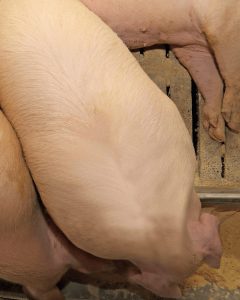
It is clear that there is still a need for more studies to be carried out in order to elucidate the best nutritional strategies for heat stress mitigation in sows. Allowing them to express their full genetic potential without any deleterious impacts.
Environmental changes must also be taken into account (environmental control of the facilities)in order to establish the best housing conditions, as well as adopting the best management practices. For example, if diets are divided into fractions and supplied during cooler periods and at times when sows have a greater innate predisposition to eat, this can increase voluntary feed intake. Optimizing and improving overall productivity as a result.
You may also like to read: “Heat stress: Poultry health, performance and potential mitigation strategies.”
Bibliographical references:
Cabezón, F. A., Schinkel, A. P., Marchant-Forde, J. N., Johnson, J. S., Stwalley, R. M. Effect of floor cooling on late lactation sows under acute heat stress. Livestock Science, v.206, n.12, p.113-120, 2017.
Chen, J., Zhang, F., Guan, W., Song, H., Tian, M., Cheng, L., Shi, K., Song, J., Chen, F., Zhang, S., Yang, F., Ren, C., Zhang, Y. Increasing selenium supply for heat-stressed or actively cooled sows improves piglet preweaning survival, colostrum and milk composition, as well as maternal selenium, antioxidant status and immunoglobulin transfer. Journal of Trace Elements in Medicine and Biology, v.52, p.89–99, 2019.
Domingos, R. L., Silva, B. A. N., De Laguna, F. B., Araujo, W. A. G., Gonçalves, M. F., Rebordões, F. I. G., Evangelista, R. P. de Alkmim, T. C. C., Miranda, H. A. F., Cardoso, L. A., Habit, S. R, Motta, S. A. B. Saccharomyces Cerevisiae var. Boulardii CNCM I-1079 during late gestation and lactation improves voluntary feed intake, milk production and litter performance of mixed farrowing sows in humid tropical climate. Animal Feed Science and Technology, v.272, n.2, p.114785, 2021.
Jeon, J. H., Yeon, S. C., Choi, Y. H., Min, W., Kim, S., Kim, P. J., Chang, H. H. Effects of chilled drinking water on the performance of lactating sows and their litters during high ambient temperatures under farm conditions. Livestock Science, v.105, n.1-3, p.96-93, 2006.
Kim, J. S., Hosseindoust, A., Lee, S. H., Choi, Y. H., Noh, H. S., Chae, B. J. Effect of dry, wet, and liquid feeding on the performance, digestibility and carcass characteristics of growing pigs. Annals of Animal Resource Sciences, v.26, p.101–109, 2015.
Mendoza, S. M., Boyd, R. D., Remus, J., Wilcok, P., Martinez, G. E., Heugten, V. Sow performance in response to natural betaine fed during lactation and postweaning during summer and non-summer months. Journal of Animal Science and Biotechnology, v.11, n.69, 2020. https://doi.org/10.1186/s40104-020-00471-0
Oh, S. M., Hosseindoust, A., Ha, S. H., Moturi, J., Mun, J. Y., Tajudeen, H., Kim, J. S. Metabolic Responses of Dietary Fiber during Heat Stress: Effects on Reproductive Performance and Stress Level of Gestating Sows. Metabolites, v.12, n.4, p.1-16, 2022.
Parois, S. P., Cabezón, F. A., Schinkel, A. P., Johson, J. S., Stwalley, R. M., Marchant-Forde, J. N. Effect of floor cooling on Behavior and Heart Rate of Late Lactation Sows Under Acute Heat Stress. Frontiers Veterinary Science, v.5, n.9, p.1-8, 2018.
Quiniou, N., Renaudeau, D., Dubois, S., Noblet, J. Influence of high ambient temperatures on food intake and feeding behaviour of multiparous lactating sows. Journal of Animal Science, v.70, n.3, p.471–479, 2000.
Rocha, V. P., Araújo, L. R. S., Mendonça, I. B., Martins, L. P., Araújo, G. G. A., Watanabe, P. H., Andrade, T. S., Evangelista, J. N. B. Effects of Saccharomyces cerevisiae var. boulardii CNCM I‑1079 on performance, colostrum and milk composition, and litter performance of mixed‑parity sows in a tropical humid climate. Tropical Animal Health and Production, v.54, n.41, 2022.
Silva, B. A. N. Nutrição de Fêmeas Suínas de Alta Performance Reprodutiva nos Trópicos. Suínos e Cia – Suinocultura Industrial. Ano VI – nº 37, 2010.
Silva, B. A. N., Eskinazi, S., Jacob, D. V., Araujo, W. A. G., Rebordões, F. I. G., Gonçalves, M. F., Domingos, R. L. Feed flavour supplementation improves kinetics of intake and feeding behaviour pattern of lactating sows in a tropical climate. Livestock Science, v.250, n.8, p.104559, 2021.
Silva, B. A. N., Oliveira, R. F. M., Donzele, J. L., Fernandes, H. C., Abreu, M. L. T., Noblet, J., Nunes, C. G. V. Effect of floor cooling on performance of lactating sows during summer. Livestock Science, v.105, n.1-3, p.176-184, 2006.
Silva, B. A. N., Oliveira, R. F. M., Donzele, J. L., Fernandes, H. C., Lima, A. L., Renaudeau, D., Noblet, J. Effect of floor cooling and dietary amino acids content on performance and behaviour of lactating primiparous sows during summer. Livestock Science, v.120, n.1-2, p.25-34, 2009.
Silva, B. A. N., Tolentino, R. L. S., Eskinazi, S., Jacob, D. V., Raidan, F. S. S., Alburquerque, T. V., Oliveira, N. C., Araujo, G. G. A., Silva, K. F., Alcici, P. F. Evaluation of feed flavor supplementation on the performance of lactating high-prolific sows in a tropical humid climate. Animal Feed Science and Technology, v.236, n.2, p.141–148, 2018.
Silva, B., Gourdine, J.L., Corrent, E., Primot, Y., Mourot, J., Noblet, J., Renaudeau, D., 2017. Effects of dietary protein content on milk composition of mixed parity lactating sows in a tropical humid climate. Journal of Veterinary Science and Technology, v.8, p.446–453, 2017.
[/register]
